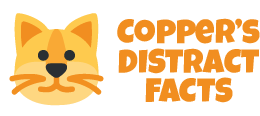Southern Serenade
When the weather starts to warm in the Southeastern United States, nighttime is the right time to tune in to the sweet sounds of the southern toad (scientific name Anaxyrus terrestris). Using a special vocal sac under their throats to make their calls, the males croon and the females swoon when they hear the steady trills from the fellas.
Now, you might be wondering just what a southern toad sounds like. The first thing that comes to mind is a toad saying something like, “I’m fixin’ to hop in this water y’all.” But southern toads don’t sound like that at all. Grab yourself a referee whistle and then blow slow and steady, like you’re calling a foul, but you don’t want to wake the baby up. That is the sound of a southern toad.

When you look, you see.
If you live in the southeastern region of the United States, you’ve got a great chance of seeing a southern toad. Where Copper lives in South Carolina, southern toads can be found in just about any yard or garden area. In the evenings, we often find them out in the open on roads, sidewalks, and driveways, especially in the glow of porch and streetlights where tasty insects are congregating.
Besides their unique call, one other common way to identify a southern toad is by the appearance of two raised “knobs” on their heads behind the eyes. Like most toads, southern toads have dry, warty skin, but don’t worry about warts if you pick one up. There is no truth to the old story that toads can give you warts if you handle them. They can release a toxin (to deter predators) which might irritate your skin, but most of the time you can handle a southern toad without any issues. Just remember to wash those hands afterward!
Even if you don’t live in the southeastern United States, you still have a great chance of finding a toad. Toads live on every continent on earth, except Antarctica. Wondering what types of frogs and toads live in your area? As part of the FrogWatch USA citizen science project, the Association of Zoos & Aquariums has put together a handy list of frog and toad species by state. You can find out which frogs and toads live in your area by selecting your state from the list here: https://www.aza.org/frogwatch-species-list-by-state-and-territory

Overload on toads (and frogs)
I hope you get a chance to explore a few of the frog and toad resources below to learn a little bit more about these creatures who provide nature’s soundtrack to the night.
Kids, remember to ask a parent, teacher, or librarian for help whenever you are looking for books or using the Internet. I always try to make sure to share kid-friendly books and resources, but websites are changing all the time, so always check with an adult first.
- Get a sample of that smooth southern toad sound, courtesy of the University of Georgia’s Savannah River Ecology Laboratory: https://srelherp.uga.edu/anurans/sounds/bufter.mp3
- The Southeast chapter of Partners in Amphibian and Reptile Conservation Observation have a nice observation guide which shares some information on southern toads here: https://separc.org/s/Southern-Toad_Observation-Guide.pdf
- The Patuxent Wildlife Research Center, part of the United States Geological Survey agency, has an awesome frog call lookup website where you can train your brain on frog and toad calls. You can pick a frog or toad by its common or scientific name, and then listen to a recording of the frog’s call. Once you have mastered the art of frog-call-ology, they even have an online quiz where you can test your skills.
- Found a frog or toad and wondering what species it is? Field guides are a great help to identify an animal. You can’t go wrong with the Peterson Field Guide to Reptiles and Amphibians of Eastern and Central North America or the Peterson Field Guide to Western Reptiles & Amphibians if you live in the western portion of the United States. Check with your librarian to see if they have a copy, or maybe you can ask one of your grown-ups to grab a copy for you. To make it easier, I’ve included a couple of links below to help them find one at a local bookstore.
- Eastern field guide: https://bookstorelink.com/9780544129979
- Western field guide: https://bookstorelink.com/9781328715500
- Now that you know all about the calls of frogs and toads, it’s time to put your wildlife DJ skills to work and mix your own beats using The Cornell Lab’s BeastBox game. Be sure to include the gray treefrog/Cope’s gray treefrog/pickerel frog voices on your new hit track. 🐸 https://academy.allaboutbirds.org/features/beastbox/
